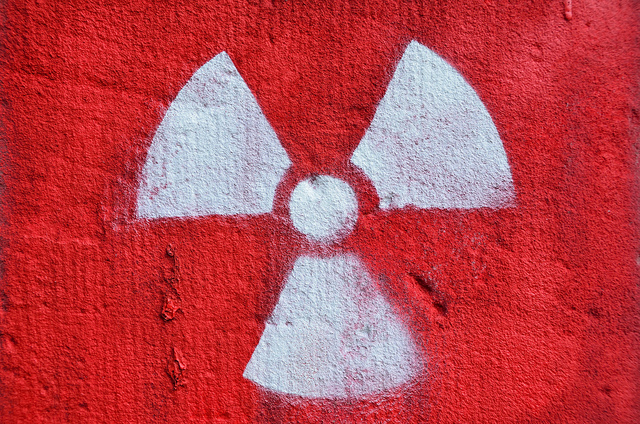A treaty to ban a low-yield nuclear weapons can work
Posted By Crispin Rovere and Kalman A. Robertson on August 16, 2013 @ 12:25
 [1]
[1]Rod Lyon doesn’t like [2] our proposal for a treaty to ban low-yield nuclear weapons [3]. But his objections employ arguments at the strategic level (pardon the pun); not focusing on the provisions of the proposed treaty, but rather focusing on the effect that the abolition of low-yield weapons would have on international security.
We’ll address his points in reverse order, beginning with his central question at the end of his post about nuclear weapons: is the risk of their use worth running in terms of deterring and constraining conflict? For low-yield weapons the answer to this question is unequivocally and for all cases, ‘no’, and this is what makes this class of nuclear weapon unique. By contrast, higher yield weapons may be worthwhile in terms of deterring and constraining conflict in some circumstances.
Lyon’s view that our proposal is designed to serve a political agenda relating to the promotion of ‘sole-purpose’ declarations for nuclear weapons is directly contrary to what we argue in our longer discussion paper. The only political agenda that we’re pushing is for the adoption of the treaty proposed as a mechanism to help manage ongoing nuclear risk. We know that some strategists may not take declaratory policy seriously, and consequently it’s not a substitute for our approach.
Lyon’s argument, that some US allies may be reluctant to support the prohibition of low-yield weapons, is probably his strongest. Although a few politicians in some US allied states, such as South Korea, have called for the re-introduction of US non-strategic nuclear weapons on their territory (as Lyon himself has argued should occur [4]), this has little to do with concerns regarding potential fallout from America’s strategic weapons. It’s also very unclear what Lyon refers to by ‘in extremis’ when discussing potential circumstances of low-yield use. If ‘in extremis’ is used to refer to a target so crucial that the United States is determined to use nuclear weapons in order to destroy it (conventional weapons being considered inadequate), then the overwhelming priority will be to reliably destroy the target; the avoidance of collateral damage having already been dismissed as the principal consideration (see the longer discussion paper [5], PDF p. 37).
Regarding the variable-yield question and the B61, this is hardly a major impediment. The solution would be found during negotiations between the advanced nuclear states as to how to manage this. Most likely it would involve changes to the electronics of the variable-yield weapons (removal of low-yield settings). If this proved impracticable then a simple agreement never to use or threaten to use nuclear weapons on yield settings below the minimum-yield threshold, coupled with an undertaking to phase out existing stockpiles as they approach the end of their ordinary replacement timeline, could be sufficient. The earlier B61s themselves had different yield settings, for example the B61-7 is presumed to have had a minimum variable-yield setting of 10 kilotons.
Lyon also argues that there’s no direct relationship between warhead yield and control exercised by governments. This claim isn’t true in some important cases. Unlike Pakistan’s strategic weapons, for example, their new lower yield weapons can’t separate the nuclear core from the trigger, making these far more susceptible to theft (see the longer discussion paper, p. 55). In other words, nuclear-armed road-mobile launchers under the total control of the Pakistani military would be travelling around the country in any crisis, assuming that they aren’t already. With respect to NATO, we don’t intend to suggest that pre-delegation of authority for use of low-yield weapons is how NATO operates today, but this certainly was the case during stages of the Cold War, when US ground forces were serving as a deterrent to Soviet invasion of Western Europe. This pre-delegation approach is, however, currently Pakistani policy. While we agree that there’s some uncertainty as to the specific yields of Pakistan’s new weapons (and these have been widely speculated), if it happened that they were found to fall below the minimum-yield threshold then they would be of more concern, and relevant for the current risks this treaty is seeking to address.
Concluding very briefly on the comment that ‘having some nuclear weapons that allow nuclear deterrence to fail in discrete small packets’ may be desirable, this is highly speculative. What we can say is that no country, in either its negative security assurances, or its overall nuclear posture, makes any distinction at all with regard to the type of nuclear weapon that it may be attacked with. There’s simply no evidence that a nuclear war would end with the single use of a low-yield weapon between nuclear-armed adversaries, and a very high likelihood that it wouldn’t. Even in the extremely rare scenarios in which this might be conceivable, a clear distinction firmly rooted in the minds of all sides between conventional and nuclear war-fighting would be a pre-requisite for successful restraint, something the legal mechanism of the proposed treaty might just enable.
Crispin Rovere and Kalman A Robertson are at the ANU’s School of International, Political & Strategic Studies and are the authors of the ASPI Policy Paper ‘Non-strategic nuclear weapons: the next step in multilateral arms control’. Image courtesy of Flickr user kewl [6].
Article printed from The Strategist: https://www.aspistrategist.org.au
URL to article: https://www.aspistrategist.org.au/a-treaty-to-ban-a-low-yield-nuclear-weapons-can-work/
URLs in this post:
[1] Image: http://www.aspistrategist.org.au/wp-content/uploads/2013/08/7788154118_7154c5ceca_z.jpg
[2] doesn’t like: http://www.aspistrategist.org.au/a-minimum-yield-threshold-treaty/
[3] treaty to ban low-yield nuclear weapons: http://www.aspistrategist.org.au/the-next-step-in-nuclear-arms-control/
[4] himself has argued should occur: http://www.aspistrategist.org.au/time-for-double-or-nothing-with-north-korea/
[5] longer discussion paper: http://www.aspi.org.au/admin/publicationFiles/Further_reading_SI62.pdf
[6] kewl: http://www.flickr.com/photos/kewl/7788154118/
Click here to print.